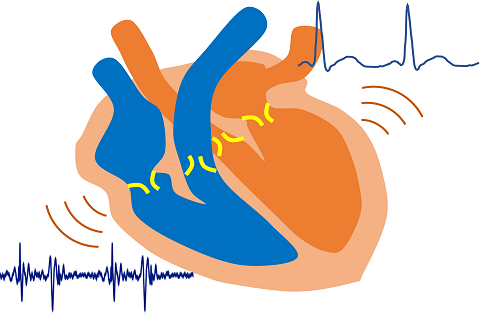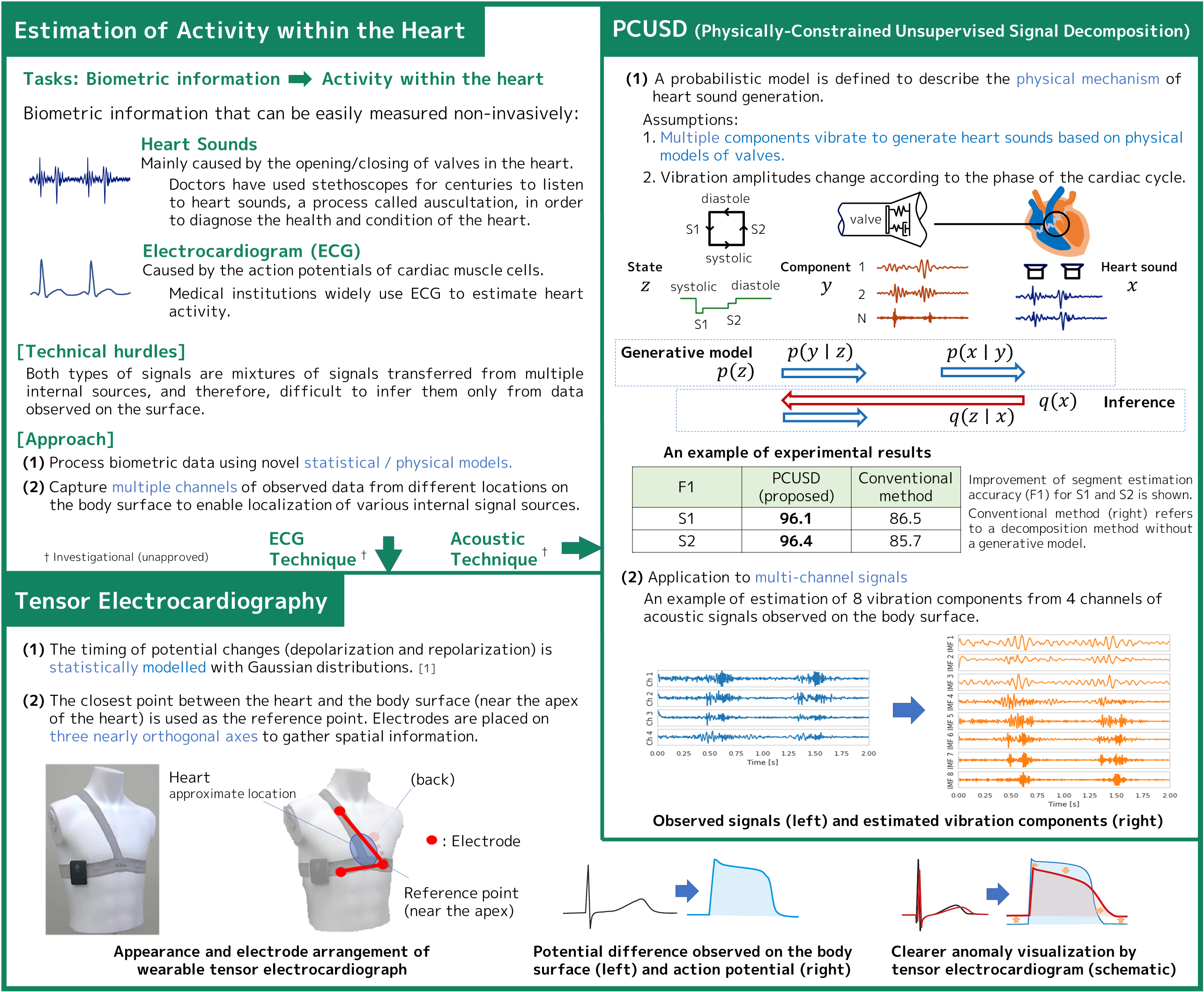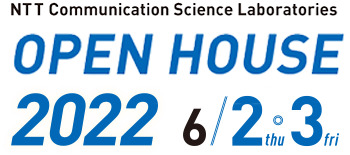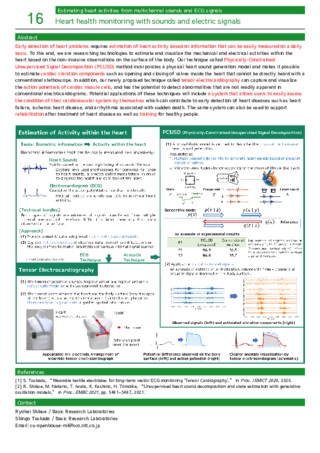| 16 |
Heart health monitoring with sounds and electric signalsEstimating heart activities from multichannel sounds and ECG signals 
|
|---|
Early detection of heart problems requires estimation of heart activity based on information that can be easily measured on a daily basis. To this end, we are researching technologies to estimate and visualize the mechanical and electrical activities within the heart based on the non-invasive observations on the surface of the body. Our technique called Physically-Constrained Unsupervised Signal Decomposition (PCUSD) method incorporates a physical heart sound generation model and makes it possible to estimate cardiac vibration components such as opening and closing of valves inside the heart that cannot be directly heard with a conventional stethoscope. In addition, our newly proposed technique called tensor electrocardiography can capture and visualize the action potentials of cardiac muscle cells, and has the potential to detect abnormalities that are not readily apparent in conventional electrocardiograms. Potential applications of these techniques will include a system that allows users to easily assess the condition of their cardiovascular system by themselves which can contribute to early detection of heart diseases such as heart failure, ischemic heart disease, and arrhythmia associated with sudden death. The same system can also be used to support rehabilitation after treatment of heart disease as well as training for healthy people.

[1] S. Tsukada, “Wearable textile electrodes for long-term vector ECG monitoring 'Tensor Cardiography',” in Proc. ISMICT 2020, 2020.
[2] R. Shibue, M. Nakano, T. Iwata, K. Kashino, H. Tomoike, “Unsupervised heart sound decomposition and state estimation with generative oscillation models,” in Proc. EMBC 2021, pp. 5481–5487, 2021.
Ryohei Shibue / Basic Research Laboratories
Shingo Tsukada / Basic Research Laboratories
Email: cs-openhouse-ml@hco.ntt.co.jp



